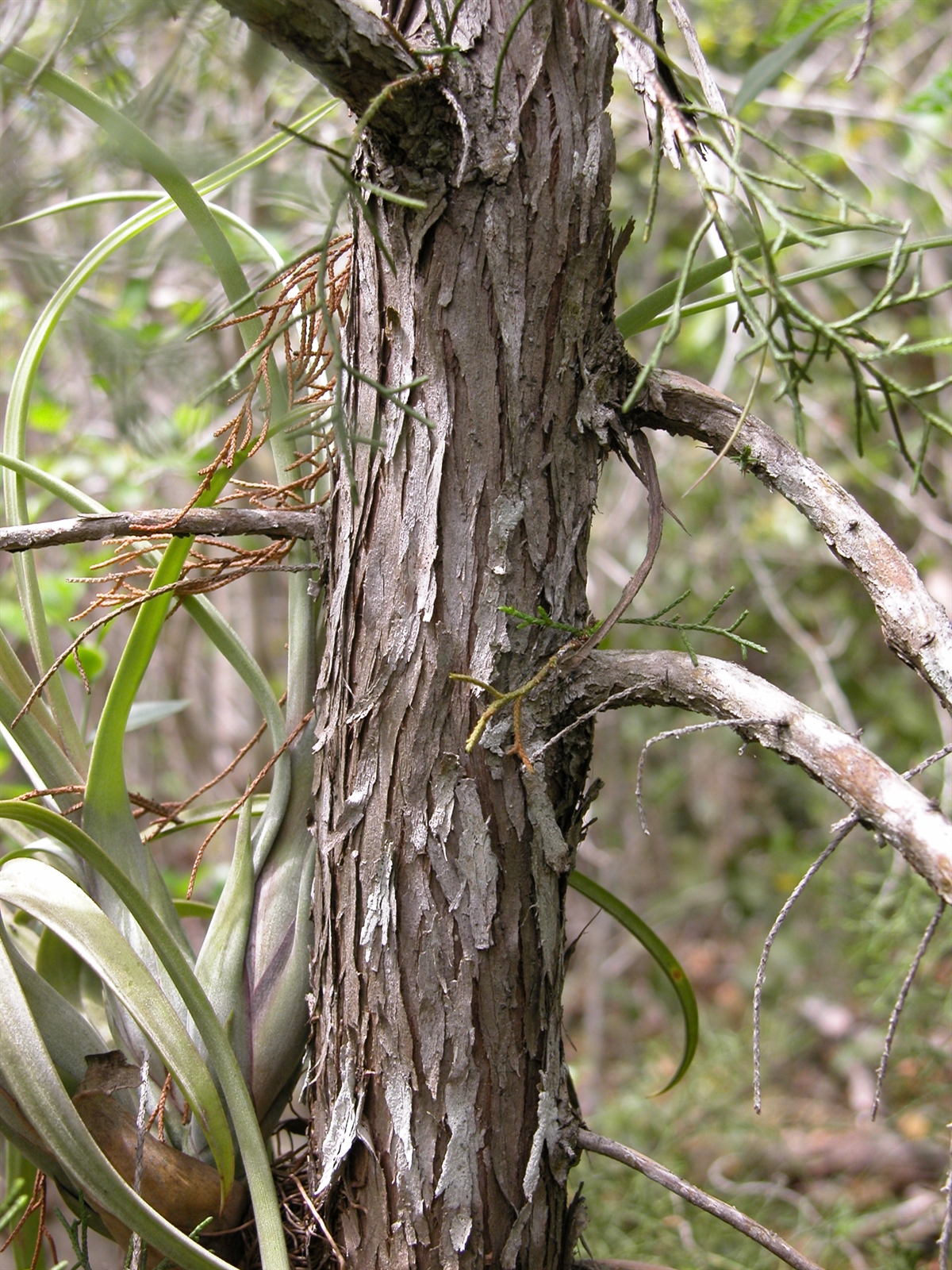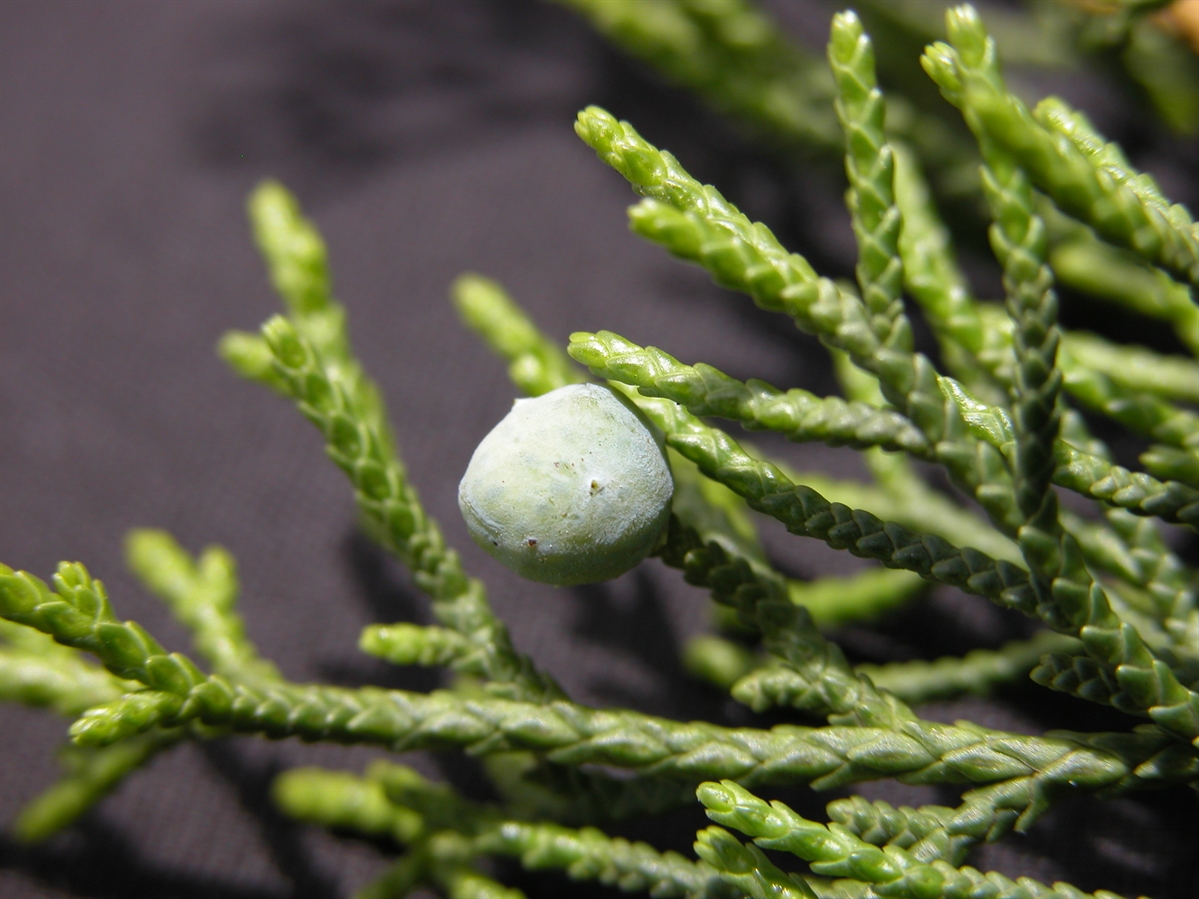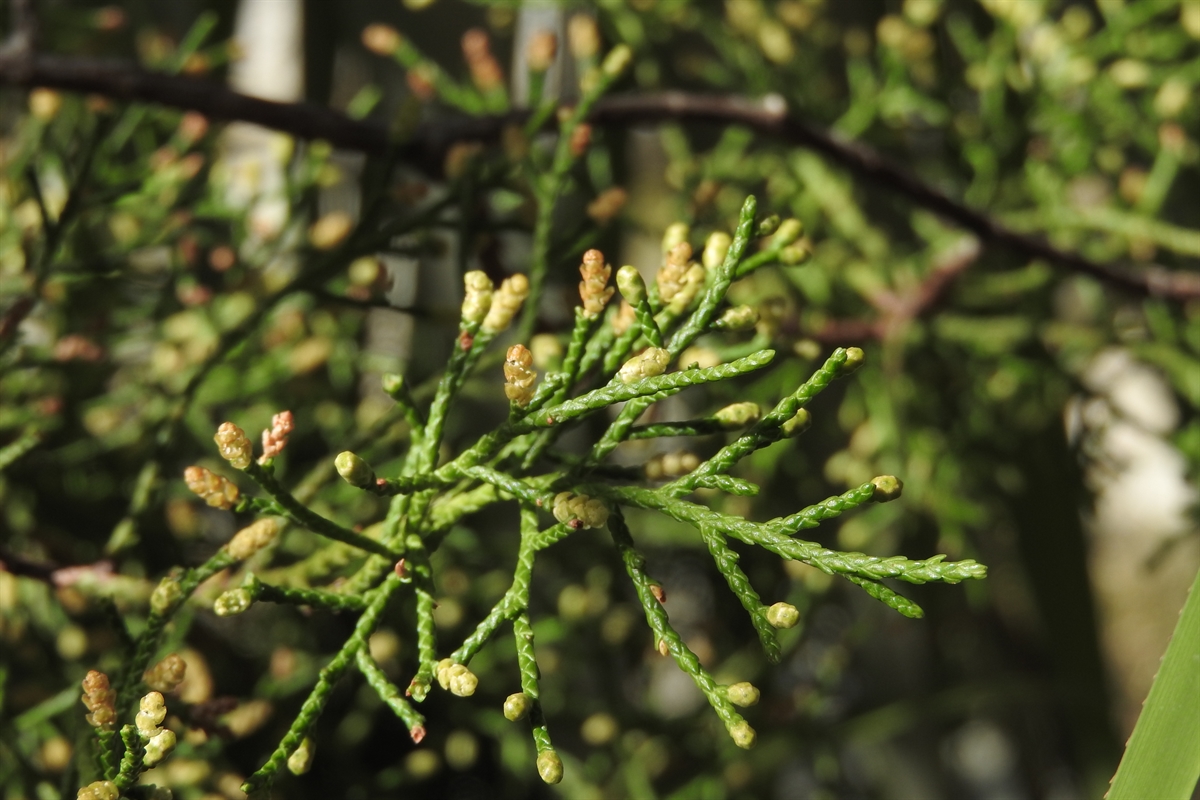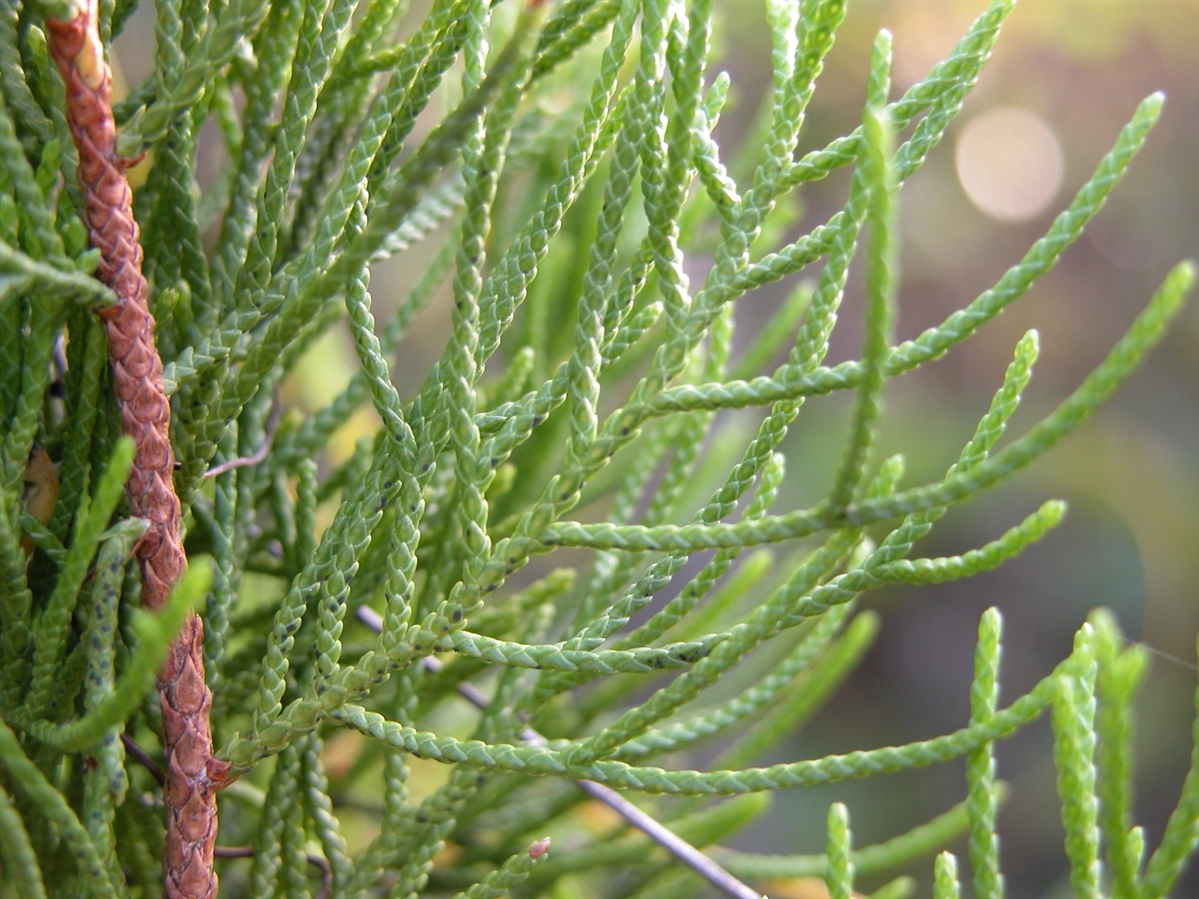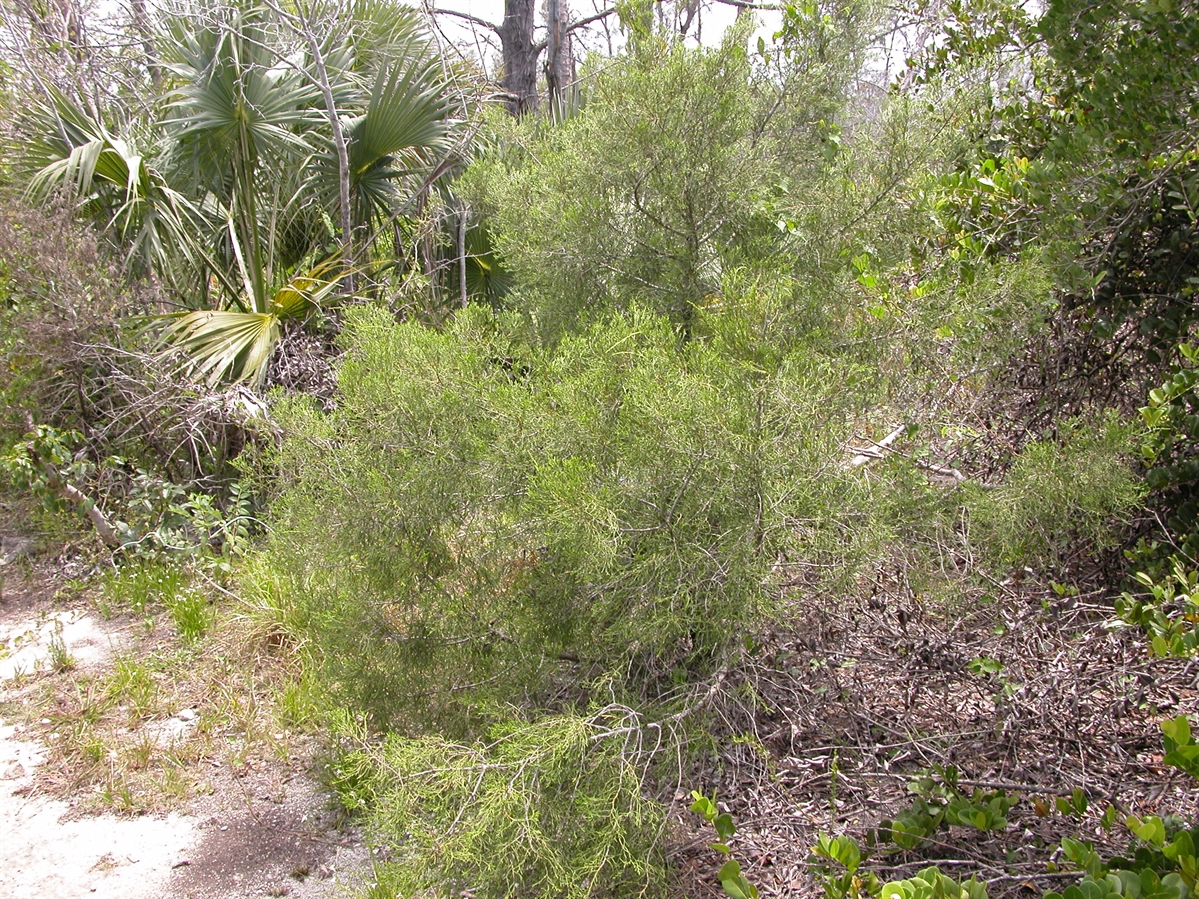Habit: Juniperus barbadensis grows as a tree to 12 m. in height and 60 cm in diameter, branching throughout. The bark peeling in strips. The leaves are reduced as ovate scales, 4 ranked, appressed to the stem and with a central adaxial gland.
Juniperus barbadensis is dioecious. The reproductive structures are cones. The pendulous microsporangiate cones are solitary, to 1 cm in length and 2 mmm in diameter arising terminally and axillary. The megasporangiate berry like cones are solitary, to 7 mm in length and diameter and blue. There are series of scales underneath the ovules. Cone glaucous at maturity.
Habitat: Juniperus barbadensis grows in open Dry Broadleaf Evergreen Formation – Woodland/Shrublands (scrubland coppice).
Distribution: Juniperus barbadensis occurs throughout the Pine Islands of the Lucayan Archipelago as well as Eleuthera and Cat Island as well as Cuba and Jamaica and the Lesser Antilles.
Medicinal/Cultural/Economic usage: Juniperus barbadensis is not known to be used medicinally in the Lucayan Archipelago.
